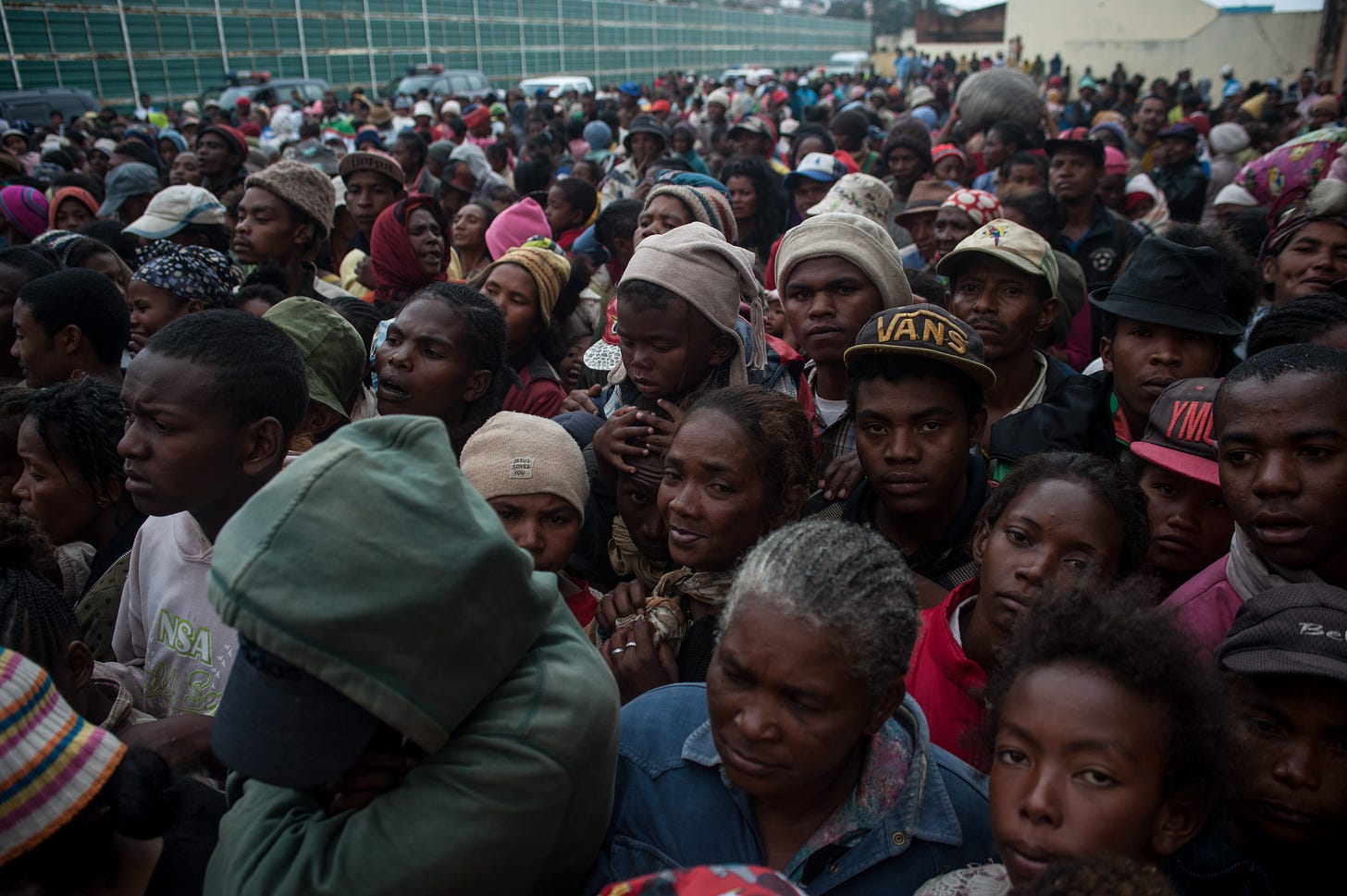The above is not a picture from today’s tropical cyclone Ana in Madagascar that has killed dozens of people and left 65,000 people without homes As far as I can find, there aren’t any pictures yet—the only American coverage I can find is one 8-paragraph Associated Press story, which ran in the Washington Post without an image. So instead this is a picture from tropical cyclone Enawo, in 2017—people are ‘sheltering’ in a sports hall. It wouldn’t surprise me if today’s scene looks pretty much the same, just with masks.
There are virtually no American reporters stationed in Africa anymore—it might as well not exist. One study of 700,000 hours of tv found that a fifth of references in our entertainment programs to the continent were on Jeopardy; Wakanda was the fourth most commonly referenced African ‘country.’
So let’s just look at the numbers, such as they are:
Madagascar is the fourth-most vulnerable country on earth to climate change according to the Global Climate Risk Index. The IPCC predicts ongoing increases in both drought and flooding for the country, with a “projected increase of average tropical cyclone wind speeds and associated
heavy precipitation and of the proportion of Category 4-5 tropical cyclones.” Last August the UN declared that the country was on the brink of a “climate-induced famine,” with a horrendous drought leaving “families scavenging for insects to survive.” Here’s how the BBC reported the story:"I clean the insects as best I can but there's almost no water," said Tamaria, a mother of four, who goes by one name.
"My children and I have been eating this every day now for eight months because we have nothing else to eat and no rain to allow us to harvest what we have sown," she added.
"Today we have absolutely nothing to eat except cactus leaves," said Bole, a mother of three, sitting on the dry earth.
She said her husband had recently died of hunger, as had a neighbour, leaving her with two more children to feed.
"What can I say? Our life is all about looking for cactus leaves, again and again, to survive."
The people of Madagascar produce, per capita, 0.12 tons of carbon a year. That places them 181st our 192 countries on this planet. The latest data for Americans shows us producing 15.24 tons per capita of carbon each year. That is about 125 times as much as the people in Madagascar.
So, knowing the numbers, explain how global immigration policy should respond to the climate crisis.





Thanks, Bill. Can't express my thanks any better than John David Rulon just did. I am pleased to be a paying subscriber to The Critical Years. Though a modest amount, I hope others will pay what they can. We owe you, big time, for all you have done and are doing.
Thank you Bill for all these years of advocacy regarding climate change and how to make humanity more sustainable. With so many climate disasters occurring more and more might get more governments, industries and people to wake up and make necessary changes,especailly moving away from fossil fuels as quickly as possible.